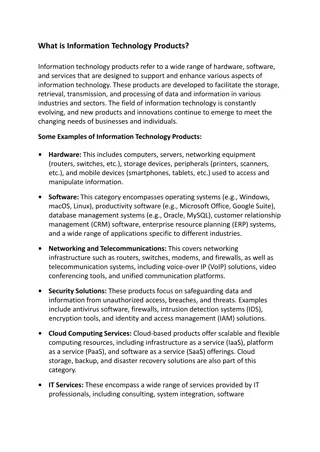
Streamlining Mobile App Development: Flutter vs. React Native for Businesses
In the fast-paced digital landscape, businesses are increasingly turning to cross-platform solutions to optimize their mobile app development processes. This PDF provides a comprehensive comparison of two leading frameworks: Flutter and React Native.
Download Presentation

Please find below an Image/Link to download the presentation.
The content on the website is provided AS IS for your information and personal use only. It may not be sold, licensed, or shared on other websites without obtaining consent from the author. Download presentation by click this link. If you encounter any issues during the download, it is possible that the publisher has removed the file from their server.
E N D
Presentation Transcript
Streamlining Mobile App Development: Flutter vs. React Native for Businesses Businesses are increasingly relying on mobile applications to reach their customers, streamline operations, and drive growth in this rapidly evolving digital landscape. As organizations try to deliver seamless mobile experiences, they often find themselves at a crossroads: which cross-platform framework should they use? Among the most popular frameworks today are Flutter and React Native. Both tools are pretty powerful at building cross-platform applications for mobile, but they have different features, advantages, and challenges. In this blog, we will see the difference between Flutter and React Native, as well as their respective strengths and weaknesses, so you can choose the best framework for your business. Along the way, we'll talk about the role of a Flutter app development company in India and how businesses can benefit by working with them.
What Are Flutter and React Native? Flutter: Flutter is an open-source framework developed by Google. It allows developers to build natively compiled applications for the mobile, web, and desktop from a single codebase. Flutter uses the Dart programming language, making it possible for developers to create high-performance apps with expressive UIs. In other words, this means developers can build visually stunning apps that feel native on both Android and iOS with Flutter.
React Native: Developed by Facebook, React Native is yet another open-source framework that lets developers use JavaScript to make mobile apps operating on iOS and Android. It leverages the incredibly popular React library to build UIs, and its performance is good also because of its ability to integrate native code, so it's quite a competitor in this space. Key Things to Watch Out For: Flutter vs React Native 1. Speed of Development and Learning Curve For businesses that need apps launched quickly, speed and ease in the development must be of the highest importance: React Native enables developers to use JavaScript, and because lots of people already know this language, it'll be easier to find enough developers. Time for such development will then be saved while, more importantly, it would be cost-effective for most businesses because of the very large ecosystems in libraries and tools. The developers will need to know Dart-a language that is far from the popularity of JavaScript-yet Flutter's hot reload does permit the possibility of seeing changes in real-time and speeds up the development process but also offers more freedom for creating custom UI components, which thus makes it rather more suitable for businesses that operate uniquely in design and aesthetic.
2. Performance Both Flutter and React Native are built to provide the most awesome quality of performance cross-platform, though they differ in how they attain this: Flutter compiles native ARM code directly, which means applications are more or less bound to be faster with the performance and resource e?ciency. This can be particularly decisive for apps that need to have complex animations or heavy resource usage. React Native relies on the bridge of JavaScript for a conversation with the native components and might put minute delays while affecting the performance in high memory utilization applications. Yet the rendering at the React Native side ensures that performance is still quite reliable for the majority of applications. 3. UI and Customization UI design and customization are prime concerns for a business. Here again, both frameworks stand on opposite sides of the spectrum: This enables Flutter to have a wide variety of options for creating highly customizable and visually pleasing user interfaces. Since Flutter does not rely on native platform components, it ensures that developers have total control over the design, allowing them to make rich UIs unique in appearance and look alike when viewed across devices. React Native employs native components. This implies that your application will tap into the standard widgets provided by the platform in question, whether iOS or Android. While this ensures good conformity to native app guidelines, it may limit the level of customization possible compared to Flutter. 4. Cost Considerations Budget often plays a very significant role in businesses' decision-making on a framework. Both Flutter and React Native save enormously in comparison to developing native apps separately for both iOS and Android. In general, cost e?ciency is where React Native prevails. This is because JavaScript is a known language; it's easier to find developers at competitive rates. In addition, most developers are familiar with React, which makes it a natural choice for businesses with existing web development teams. The costs for setting up with Flutter may be relatively more significant because Dart is not a well-known name. This will make the cost of hiring professional Flutter developers high for many businesses or take them longer to train their teams. However, many businesses find the investment worthwhile when considering the advantages that Flutter provides in terms of performance and customization. 5. Community Support and Ecosystem Being part of a large community and rich ecosystem would highly benefit your development experience, especially when debugging or implementing third-party integrations. React Native is more mature compared to Flutter, with a significantly large, active community. This allows businesses to build on an enormous pool of third-party tools, resources, and plugins, thus saving considerable time during the development process.
Although newer, Flutter is quickly gaining ground due to Google's efforts. The community for Flutter is passionate and rapidly evolving, and it's doing a lot in terms of creating resources and tools. Although it's still playing catch-up with React Native in terms of maturity in the ecosystem, it does an excellent job for developers looking to create highly customized apps. 6. Suitability for Your Business Needs Your decision will also rely on the needs of your application. Here is where to use each framework: You should use Flutter when an app demands highly customized, optimized UIs with smooth animations. You are developing for a list of platforms beyond iOS and Android. Flutter is quite convenient if you want a visually distinctive product with great cross-platform consistency. Choose React Native, for example, to develop a mobile app more rapidly when reusing code is in focus, yet there is still an existing talent pool of JavaScript developers. Select Flutter if your app's function is relatively basic and does not necessitate heavy customization. Why Hire India React Native App Development Company? India has become an important location for the development of mobile apps. Here is why: 1. Cost-E?ective Solutions India offers very competitive pricing for mobile app development services without compromising quality. Businesses can save significantly on development costs while still receiving top-notch services. Choosing a React Native app development company in India can be a cost-effective solution for businesses that need high-quality apps on a budget. 2. Access to Skilled Talent Indian developers know both Flutter and React Native; therefore, businesses can hire a large pool of professionals who are skilled. Whether it is your developers building your app with Flutter or React Native, India holds some of the best and most experienced in the whole global market. 3. Faster Time to Market India is also the home for very e?cient and quick-to-deliver app development companies. So, when you hire an app development company in India the turnaround times will be faster, thus ensuring a head start before the competition as well to launch your app. 4. Experienced Team Indian companies are well-experienced when it comes to dealing with global clients; they are familiar with and comfortable handling remote projects. You get to access global best practices, quality solutions, and custom-ordered expertise tailored to your business goals when you work with the best app development company in India. Conclusion: Flutter vs React Native Both Flutter and React Native have compelling advantages for businesses aiming to develop cross-platform mobile applications. Therefore, the choice between them will depend on your project s specific needs, the desired performance, the degree of customization required, and the expertise of your development team. To ensure success, many companies opt to hire app developers in India,
leveraging their experience in both frameworks to deliver high-quality, cost-effective solutions tailored to your business objectives Whether you're going to opt for Flutter due to its beautiful, customizable UIs or React Native because of faster development cycles and huge community support, working with a professional app development company in India like iWebServices can help you build a high-quality application tailored exactly toward your business objectives. Source URL: https://www.appclonescript.com/mobile-app-development-flutter-vs-react-native/






















